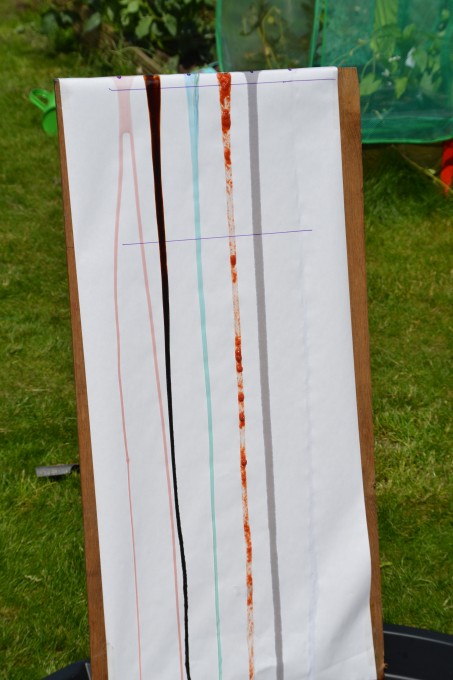Who doesn’t love Ribena? And chips? Okay, maybe not really together as such. I found this experiment through Practical Biology a few years ago, but have only just got around to testing it myself and then putting it into a STEM session. The Practical Biology/Nuffield site have lots of different experiments you can browse through, each with teacher and separate student guidance. I simplified the Blackcurrant Osmosis one for the time and age of the students.
It really is very simple and easy to set up. Also, it’s very visual for students to look at. Here are some of our potato chips after 15-20 minutes in different Ribena concentrations –

It’s quite obvious which one is 0% Blackcurrant and which is 100%. It’s pretty clear even for the other concentrations. That wouldn’t happen with plain old sugar water, would it?
We did this with a group or KS3 who knew nothing about osmosis, nothing about concentration and had never done a practical quite like this before, but in the hour session they all did pretty well. I think this would be perfectly suited for an hour length lesson especially with the right background knowledge. I would simplify it for a repeat STEM session though and cut all of the chips to perfect size so that step could be cut out completely. I am pretty amazed at how well the year 7s did with making the different concentrations and, from the results, all of the concentrations were made pretty accurately. There was only one group with anomalous results that made no sense!

It’s all actually quite simple really – make 6 concentrations of blackcurrant squash (from 0% to 100%) (oh, and whilst Ribena works very well, so does the blackcurrant cordial we tried), put a pre-weighed potato chip into each concentration and leave for 15-20 minutes.

(Note how the chips float with increasing squash concentration. Can you explain that?)
Then, remove each chip, pat them dry and weigh each one again. Then calculate the percentage change in mass.

The 0% blackcurrant was the only chip to not lose mass as water moved into it from the greater concentration outside of the potato cells. All of the others had water leave the chip via osmosis (to varying extents) as the water concentration was greater within the chips compared to the sugary Ribena.
For younger students, if you leave the chips in long enough they might get enough out of the experiment from just seeing the purple coloured chips. Can they explain it? And then with age/knowledge move on to the theory behind osmosis and the graphing example Nuffield gives.
I’d also like to try their example of altering this experiment to show the rate of water movement. Perhaps that would be better for understanding the basics behind osmosis for younger students.
 This is how you can make some awesome marbleized looking Easter Eggs quickly and easily, without a lot of mess and spending a lot of money. Here’s what
This is how you can make some awesome marbleized looking Easter Eggs quickly and easily, without a lot of mess and spending a lot of money. Here’s what








